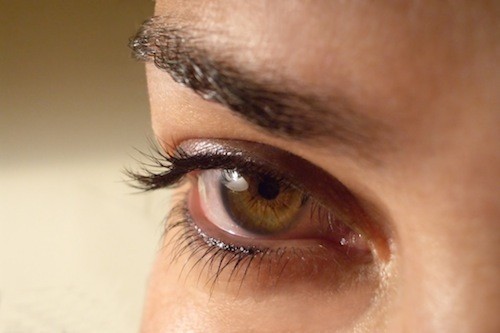 For many people, eye irritation isn’t just a symptom of allergy season or the cold windy air of winter. It’s ocular rosacea, a subtype of the disorder that can potentially be very serious if allowed to become severe.
For many people, eye irritation isn’t just a symptom of allergy season or the cold windy air of winter. It’s ocular rosacea, a subtype of the disorder that can potentially be very serious if allowed to become severe.
Found to affect up to 60 percent of rosacea patients in surveys by the National Rosacea Society (NRS), ocular rosacea often results in a watery or bloodshot appearance, irritation and burning or stinging of the eyes. In addition, the eyelids may become swollen, and styes are common. Many patients report feeling a gritty sensation, as if there’s a foreign body in their eyes. Blasts of cold air in winter may also cause a watery discharge, another possible symptom.
A medical study of ocular rosacea patients found that 85 percent had meibomian gland dysfunction. The meibomian glands line the edge of the eyelid and secrete a fatty substance that helps keep the eye from drying out. Plugging of these glands may result in dry eye, styes or chalazions (a type of benign cyst).
Since most people do not associate eye discomfort with a skin disorder and the symptoms are usually mild, many rosacea patients may not recognize that they suffer from the ocular as well as the facial manifestations of the disorder. Severe ocular rosacea, however, can pose significant consequences if left untreated, including corneal damage and the development of additional blood vessels in the cornea, a condition known as corneal neovascularization. Both conditions may result in reduced visual acuity.
Research continues to uncover more information on this rosacea subtype that can lead to better diagnosis. In one recent study, researchers found differences in the properties of glycans, a type of molecule in the tears and saliva, between rosacea patients and healthy patients. Another study that examined the eyelashes of 38 ocular rosacea patients found the presence of bacteria associated with Demodex mites, and noted that the patients may have been affected by a reaction to the proteins produced by the bacteria, a possible reaction to the mites themselves or colonization by other microbes.
Treatment for ocular rosacea may include warm compresses several times a day and gentle cleansing of the eyelid with baby shampoo for mild cases. For moderate cases, topical ophthalmic medications along with eye drops may also be prescribed. If the condition is severe, doctors may include antibiotics as prescribed therapy. A new medical procedure that unblocks the meibomian glands with thin probes was also found to improve symptoms without later complications in a small sample of patients.
Be sure to let your dermatologist know of any eye symptoms you may experience, and rosacea patients with substantial eye symptoms are advised to see an eye doctor. In some cases, the eyes may also serve as a warning sign of things to come. According to some reports, about 20 percent of rosacea patients develop ocular rosacea before the facial symptoms appear, and ocular rosacea patients are then often referred to dermatologists by their eye doctors.